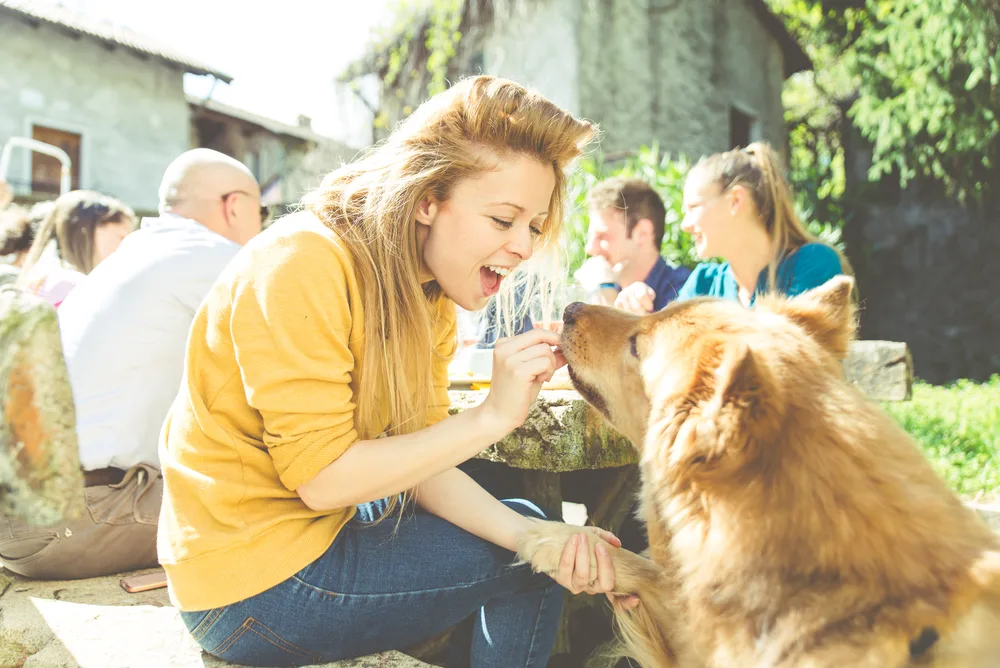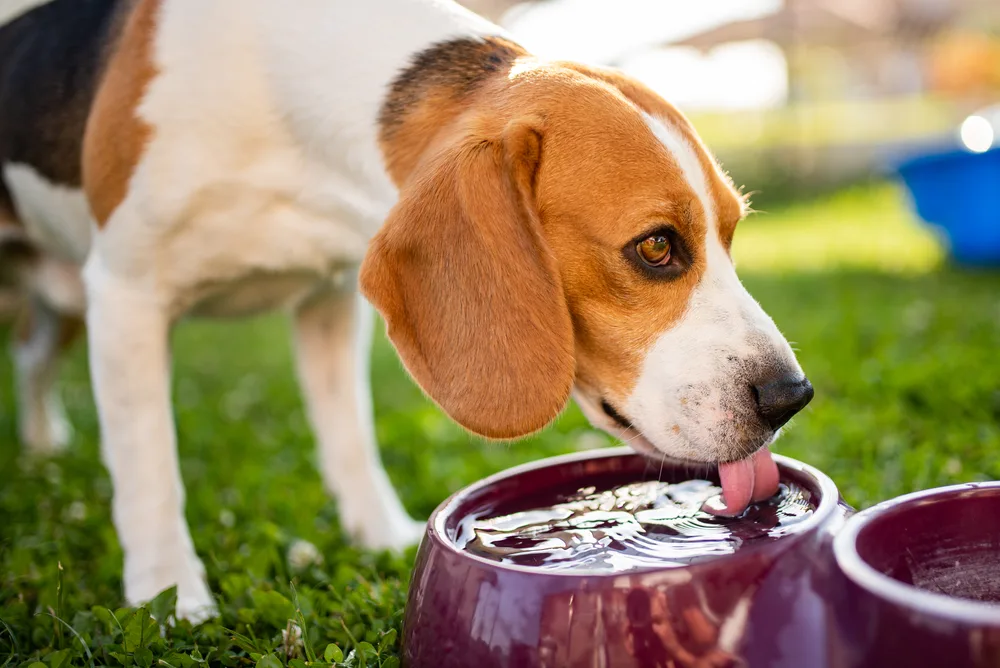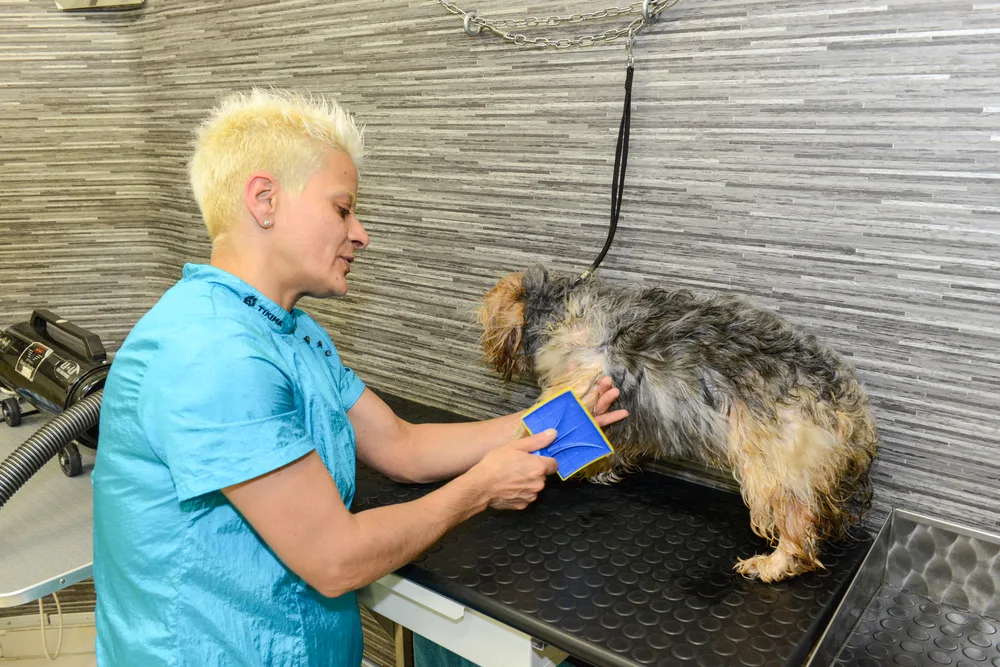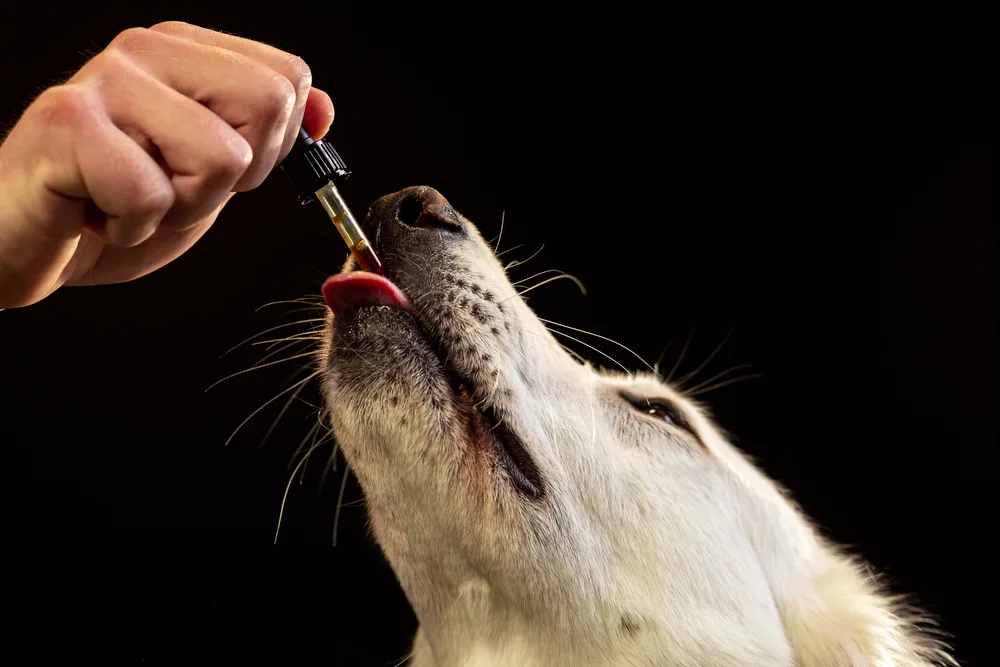Tear stains on dogs do not surprise me, thanks to my many years working as a dog breeder and pet parent. I have noticed that the tear stains are more conspicuous in dogs with brightly colored coats.

They appear more visibly on white-coated fur babies and tend to affect puppies more.
But what causes these stains, one may ask? My experience proves that several things cause tear stains or dog tearing. Other pet parents have verified this in our dog-owner association.
The leading causes may include the following:
- The dog’s eye shape
- Health condition
- Blocked tear ducts
- Allergies from food and the environment.
- Teething in puppies
- Ear infection
Confirm the dog’s health status when you notice stains on the dog’s fur. If the staining is sudden and unexpected, visit the vet to rule out diseases and infections.
Always commence treatment immediately if necessary.
But, if the dog is healthy and still tear-staining, which is normal sometimes, you could do a few things. Here are a few recommendations based on what I do with my dogs.
Inspect their Food

I often start with food first whenever my dogs exhibit sudden unexplained changes. Usually, food allergies result from newly-introduced diets.
Changed ingredients are significant causes of sudden behavioral and physical changes in dogs. This happens whenever I change their food brand or test a new meal I am still determining.
I suspect the foods contain ingredients many dogs may be allergic to.
Ensure the food contains no cheap fillers. These trigger reactions and cause excessive tearing in dogs.
Instead, choose enriching foods. I suggest a raw diet, which is fully balanced and recommended for dogs.
Check their Water

You probably give your dog a specific type of water to drink. Make sure to carry some with you when traveling with them.
From experience, I have noted that my dogs tend to tear-stain more whenever I give them ‘new’ water. I suspect this could be due to excessive water minerals, as they cannot process them properly.
Typically my dogs drink purified water as this helps minimize the tear staining. It works best for white-coated breeds.
In case you cannot access purified water, opt for reverse-osmosis water. Distilled water is the other safe option.
Keep up with Hygienic Practices

Dog grooming is even more critical now when your dog suddenly starts tear-staining. The unsightly stains can be a turn-off if not taken care of daily.
Daily facial grooming is easily achievable. You can do it without harming the pet with harsh products. I’d suggest doing the following:
- Use a canine eye wash that flushes the dog’s eyes every day. You can get a saline eye wash solution at a vet shop or use appropriate dog eye drops for the same results.
- Have dog-safe eye-wash wipes that you rub around and underneath the eye area. Buy pre-made wipes from a vet clinic, or make your own.
- Boil a tablespoon of boric acid powder in a cup of distilled water and refrigerate it. This can last a week long before making a new batch.
- Use a wet washcloth with dry or waterless shampoo and wash the muzzle hair daily. Alternatively, use a dry paper towel with 3% hydrogen peroxide to clean the area. Once done, comb and blow-dry the fur.
- Trim the hair around the eye area regularly. This minimizes the irritation that triggers tear staining.
Keep Your Dog Moist-Free as Much as Possible
Dry off the dog’s mouth area after drinking water using paper towels. Also, dust some cornstarch around the eyes, between the toes, and around the muzzle area.
It helps absorb excess moisture and eliminate tear stains over time.
Explore Food Additives

Some food additives are great for dogs. I add some apple cider vinegar to their water. Sometimes I also add a bit of buttermilk powder to their food.
Introduce some healthy probiotic enzymes as often as you can. I recommend getting the store-bought probiotics if you want an easy fix.
Whenever the staining is too much and unending, I involve the vet. The vet recommends using mild antibiotics for a short duration.
In most cases, the prescribed antibiotics often include Tylosin and Lincocin. I buy Vetericyn ophthalmic gel for urgent intervention and use it before the vet visit.
All dogs respond differently, which is why there is no sure way of preventing or getting rid of tear stains. Treat each dog differently and make them comfortable by cleaning the stains often.
I also recommend having a dog maintenance routine and constant vet checks. Close monitoring helps identify the causes of sudden tear stains and encourages prompt intervention.
Many other dog parents I work with and those in my circle have had similar experiences.
Readers Also Ask
What can I use to remove tear stains on my dog?
Use mild hydrogen peroxide. This helps eliminate tear stains in the muzzle, making sure to avoid sensitive eye areas.
Why does my dog have a lot of tear stains?
There are several reasons dogs develop tear stains. They include blocked tear ducts caused by overgrown hair or lashes.
Allergies could also trigger them to food and the environment and ailments. The different triggers cause an overproduction of tears which leads to tear-staining.
Why does my dog have a lot of tear stains?
Sudden/ increased tear staining among dogs can be attributed to overgrown lashes/ hair. Seasonal weather changes may lead to allergic reactions. Investigate changes in food and water quality to rule out any possibilities.
Will tear stains ever go away?
Excessive tear staining can be bothersome to pet parents. In most cases, tear-staining happens among puppies and is likely to go away on its own when the puppy grows.
After five months, some puppies experience wetness under the eyes/ tear staining. Be open-minded and take care of each dog individually.
